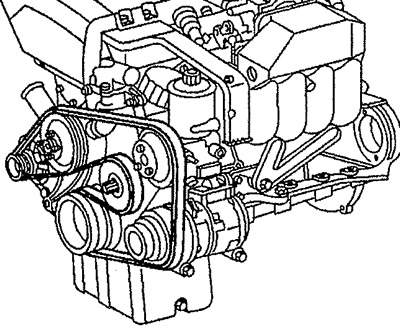
Pic. 1.1. Checking drive belts.
1. Turn the ignition key to position "OFF".
2. Set the shift lever to the position "N" on a manual transmission (into position "R" on automatic transmission).
3. Tighten the parking brake lever.
4. Check the alternator drive belt for damage. If damage is found, the belt must be replaced.
Main belt damage:
- wear of the edges of the wedge-shaped ribs of the belt B and exposure of the cord in the grooves of the belt C; on new belts, the ribs have a trapezoidal shape A (see fig. 1.2);
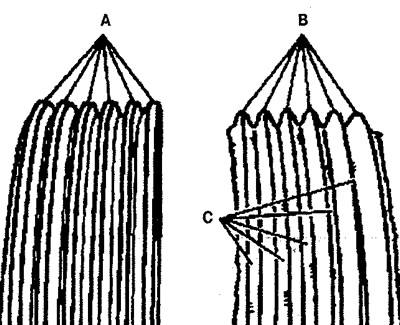
Pic. 1.2. Wear of the edges of the wedge-shaped ribs of the belt B and exposure of the cord in the grooves of the belt C.
- belt rib break F (see fig.1.3);
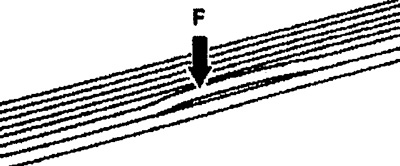
Pic. 1.3. Rupture of belt ribs F.
- lateral damage to the ribs K and extrusion of the rubber mass outward J (see fig. 1:4);
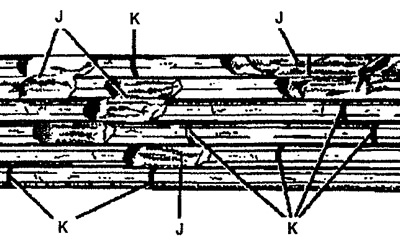
Pic. 1.4. Lateral damage to the ribs K and extrusion of the rubber mass outward J.
- damage to the outer part of the belt D and transverse damage to the belt ribs E (see fig. 1.5);
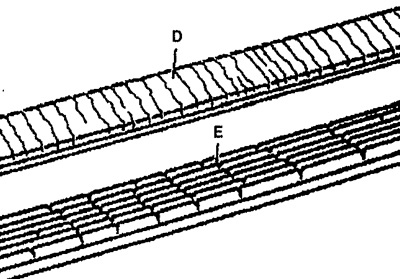
Pic. 1.5. Damage to the outer part of the belt D and transverse damage to the belt ribs E.
- breakage of the cord, its exit to the outside G and rubbing of the cord H (see fig.1.6);
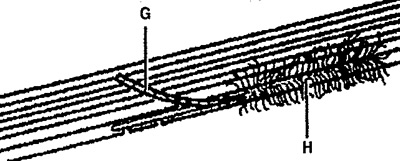
Pic. 1.6. Rupture of the cord, its exit to the outside G and wiping the cord H.
- extrusion of the rubber mass on the outer part of the belt L and contamination or sticking of small stones in the grooves of the belt M (see fig. 1.7);
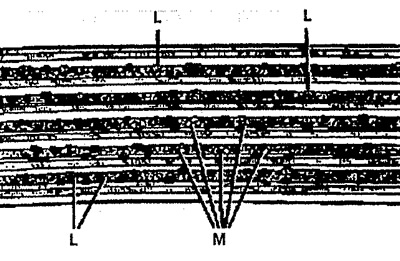
Pic. 1.7. Extrusion of the rubber mass on the outer part of the belt L and contamination or sticking of small stones in the grooves of the belt M.
